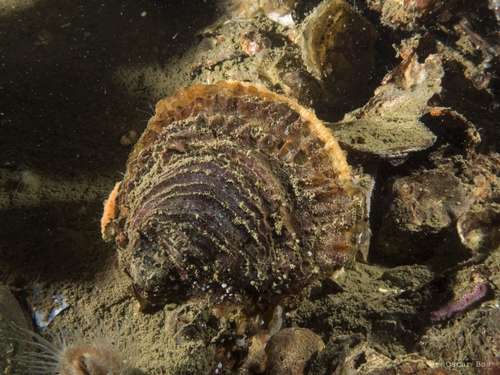|
| Common Animals Fish Mushrooms Flora |
Ostrea edulis |
June: Larval development. Oysters’ larvae start developing and looking for a suitable place to settle.
Oysters are considered a delicacy in many European countries Traditionally served raw with lemon or wine sauce
Found in coastal waters of Europe Prefers brackish water with temperatures 10–20°C Important for aquaculture and fisheries
Hand collection in coastal shallow waters Use of nets and baskets for aquaculture farming
Best harvesting time is late spring and summer Carefully select oysters without damage or contamination
Average weight: 0.2 kg
Clean from shells and dirt Commonly eaten raw or with minimal cooking
Meat: Raw, baking, grilling
Raw oysters with lemon (Served raw)
Traditional serving with lemon juice
Traditional serving with lemon juice
1. Shuck oyster using a special knife.
2. Serve with lemon wedge and optional sauce.
2. Serve with lemon wedge and optional sauce.
Baked oysters with garlic butter (Baking)
Aromatic and tender oysters
Aromatic and tender oysters
1. Shuck oysters and add garlic butter on meat.
2. Bake for 5–7 minutes at 200°C (390°F).
3. Serve hot.
2. Bake for 5–7 minutes at 200°C (390°F).
3. Serve hot.
Grilled oysters with lemon and herbs (Grilling)
Light and aromatic dish
Light and aromatic dish
1. Place oysters on grill and cook for 3–5 minutes.
2. Drizzle with lemon juice and sprinkle herbs.
3. Serve hot.
2. Drizzle with lemon juice and sprinkle herbs.
3. Serve hot.
Oysters in creamy sauce (Braising)
Tender dish with creamy texture
Tender dish with creamy texture
1. Sauté oysters in butter with onion and garlic.
2. Braise with cream for 10 minutes.
3. Serve with bread.
2. Braise with cream for 10 minutes.
3. Serve with bread.
 United States · Texas · Williamson
United States · Texas · Williamson